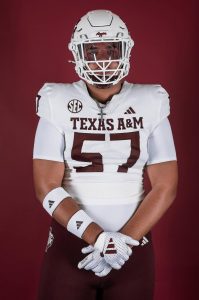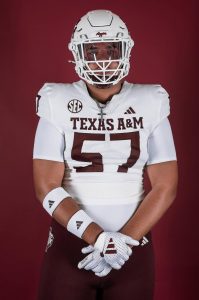
FILE PHOTO: May 7, 2025; Boston, Massachusetts, USA; Boston Celtics center Kristaps Porzingis (8) shoots a free throw against the New York Knicks in the second half during game two of the second round for the 2025 NBA Playoffs at TD Garden. Mandatory Credit: David Butler II-Imagn Images/File Photo
When the Atlanta Hawks completed their three‑team deal to acquire Kristaps Porzingis from the Boston Celtics, basketball circles buzzed with conversation. After all, here was a towering unicorn of talent—an elite shot‑blocking, stretch‑big man—landing in a perfect-fit situation next to Trae Young in Atlanta. And yet, this transformative acquisition coincided with the Hawks sacrificing a mid-first‑round selection (No. 22, sent to Brooklyn) and bringing in a hefty $30.7 million expiring contract. It was pure instant-impact basketball.
Atlanta’s front office, under the guidance of new GM Onsi Saleh, made their intentions undeniable: overlook cap concerns, shake up the roster, and chase relevance in a weakened Eastern Conference. With the likes of Jayson Tatum, Damian Lillard, and Tyrese Haliburton all recovering from Achilles injuries, the Hawks saw an opportunity to make noise. Porzingis, standing 7’2” with a 7’6” wingspan, offers a defensive backbone that was sorely missing—Atlanta had languished on the interior, especially after Clint Capela’s slide and Onyeka Okongwu’s inconsistent stretch as a rim protector. With KP in the fold, the Hawks suddenly boast multiple rim protectors under a single roof: Okongwu, Jalen Johnson, Zaccharie Risacher, Dyson Daniels and now Porzingis form a formidable, switchable defense. (sbnation.com)
But it isn’t just about locking down the paint. What makes this a true “perfect fit” is the gravity Porzingis adds on the offensive end. He shot nearly 41 percent from three last season on some 6 attempts per game—elites for any big man—providing lethal spacing around Trae Young in pick‑and‑pop actions. One could almost visualize Atlanta’s ideal lineup: Young, Daniels, Johnson, Porzingis, Okongwu—archaic conventional lineups reimagined for pace and space dominance. The offense becomes both malleable and explosive: Porzingis drifts to the arc, Young dishes; Young and Daniels slash; Johnson and Risacher crash. Even defensively, that long frontcourt can smother opponents with length, encouraging tough shots and clogging passing lanes.
Of course, the elephant in the room remains Porzingis’s fragile health. His first season in Boston was disrupted by ankle surgery and an odd virus during the playoffs that slowed him dramatically—he appeared in just 42 regular-season games (43 in one source) and looked limp in multiple playoff outings before Boston’s elimination. His value lies in his length, timing, and perimeter shooting—but durability concerns persist. It’s almost guaranteed he’ll miss 20+ games again.
Yet from Atlanta’s standpoint, the risk is mitigated. Porzingis is on an expiring contract, locking in $30.7 million for one season with no long-term commitment. If he stays healthy, the Hawks get star-tier production; if not, settling him at the deadline still clears cap space. When viewed alongside the cap sheet, this was a savvy gamble. (si.com)
Turning to the Celtics, shedding Porzingis’s salary was an astute salary-cap move. Boston had already shipped Jrue Holiday and was flirting with the NBA’s dreaded second-line salary-tax apron. Offloading Porzingis and bringing in Georges Niang (remembered as a long-range specialist) and a second-rounder allowed the Celtics to preserve flexibility, dodge heavy punitive taxes, and recalibrate post-championship. With Jaylen Brown and Derrick White rumored as trade candidates, Boston is embracing its reset—perhaps eyeing a lottery finish next season as they rebuild around a healthier Tatum. (reuters.com)
In Brooklyn’s corner of the triangle, the Nets used cap-savvy maneuvering to continue hoarding draft equity. They took Terance Mann and that No. 22 pick—key pieces that pushed their total to five first-rounders in 2025 (Nos. 8, 19, 22, 26, 27). Their GM Sean Marks clearly sees upside: they can hold these picks to draft or package them to climb in the draft order—perhaps to grab a talent like Rutgers forward Ace Bailey. (sbnation.com)
Zooming back to the hardwood in Atlanta, the excitement is palpable. The possibility of fielding two bigs—Okongwu and Porzingis—or rolling out four-long frontcourts depending on matchups is tantalizing. Porzingis and Young in motion conjures flashbacks of the D’Antoni Mavericks or the modern Warriors: elite spacing, high-skill execution, sharp ball movement. And in a wide-open East? One torn Achilles or injury-prone star to one challenge, and Atlanta could vault into second-round contention with Porzingis as the game-swinger.
Off-ball, he also screens, rolls, rebounds, and still scores around 19 ppg. In Boston, Porzingis averaged about 19.5 points, 6.8 rebounds, 2.1 assists and roughly 1.8 blocks, anchoring their interior defense and contributing enough offensive punch to warrant full court attention. (as.com) He knows moments matter—he saw the Celtics win a championship in 2024, even if his role dwindled due to injury. He’s been there, done that, and now can provide playoff experience to an investing Hawks core.
The counterpoint? His fragility may ultimately define his utility. His ankle had already required repair, and that mystery virus during the playoffs would flag any training staff. Last season’s field goal decline—65 percent at the rim vs 74 percent two seasons ago—suggests some lost explosiveness. Plus, finishing only 42 games makes press skepticism reasonable. But Atlanta is equipped to mitigate absences; their bench, anchored by Johnson, Risacher, Daniels, and even Okongwu, provides capable fill-ins. Sell‑the‑depth doesn’t apply in modern NBA with ride‑or‑die pieces around.
In a broader context, this move signals a shift: some teams—like the Hawks—are willing to gamble on high-reward, short‑term assets; others—Boston and Brooklyn—double down on cost control and draft capital, even at the expense of immediate talent. Hawks ownership and management clearly judged this season’s window to be now, whether or not the window arrives physically with healthy returns.
The optics, too, are compelling: Trae Young’s star power combined with the unicorn allure of Kristaps Porzingis offers marketing gold. The intrigue of a Latvian All‑Star centering Atlanta’s offense could draw attention far beyond Peach Street. His deep shooting removes lopsided defensive attention from Young, making both players tougher to guard in isolation.
Looking on the horizon, if Porzingis stays upright, the Hawks aren’t just contending—they’re meaningful in the championship conversation. If his surgeries or illnesses recur, Atlanta can cut bait at the trade deadline, clear cap, regroup around Young, and keep building.
Let’s not ignore the broader trend: teams now treat the season more flexibly—they trade at the deadline, pivot into purchaser mode, or become sellers if things sour. But the Hawks went all in early with this trade, declaring their intent before the draft. That’s bold.
It’ll be telling to watch their draft: they still hold pick No. 13 in 2025—a chance to add youthful frontcourt depth. With Porzingis in place, they may seek athletic wings or defensive point forwards to complement Young and build resilience. This pick, combined with a likely Porzingis deadline gain, badge their long-term bench strength.
Porzingis himself enters a new ecosystem: one where his skills can flourish, in an attack-first system that rewards shooting and protects him from traditional post grind. His ability to protect the rim while operating on the perimeter makes him uniquely suited. And his presence elevates the Hawks’ identity—this isn’t just Trae-centric offense; now it’s high-end two-way basketball with arc-spanning 7-footers.
Will Porzingis reconnect with his old magic? He’s a former All‑Star, All‑Rookie, EuroCup rising star, and NBA champion. The term “unicorn” was coined by Kevin Durant himself in 2016, crediting a player who at seven-foot could handle, shoot, rebound, and defend—an uncanny blend of skills. In Atlanta, those unicorn traits are on full display, unchained in a system devoted to pace and spacing.
This trade, graded A‑ by SBNation and A by Sports Illustrated, underscores its perceived win-win for Atlanta—balancing cost, talent, and flexibility. (sbnation.com) And Brooklyn’s A is well‑deserved too: versatility and draft ammo, while Boston’s B+ fits the logic of tax avoidance.
From a Hawks fan perspective, the simple takeaway is thrilling: one of the league’s most dynamic duos—Trae Young and Kristaps Porzingis—are now united. Whether they run high pick‑and‑pop, mid‑range double‑ups, or iso drives with Pop loader spacing, their ceiling ascends sharply. Defensively, they become a tougher Smashmouth team.
So what comes next? The draft decision, Porzingis’s health during training camp, blending Okongwu and Johnson off the bench or starting line—these decisions will define execution. Will Atlanta chase Kawhi Leonard–like two‑way shooting big? Maybe. But with Porzingis under contract for 2025‑26, they’ve bought clarity: pursue now, secure flexibility, and ride or rebuild later.
If drafting is successful, Atlanta could sustain this model even after Porzingis departs next summer, riding Young plus a stack of young frontcourt talent. But even in isolation, the addition of Porzingis this June 24‑25 marks the pivot moment. It tells veteran players, agents, and fans: Hawks are not buyers in name only—they’ve backed up rhetoric with action, paying for talent in a manner that would make contenders in Brooklyn, Boston, Toronto, or Philadelphia watch.
It’s chess—seize the center, open diagonals, control the game. Porzingis in peach is Atlanta’s queen on the board. He spaces shots, blocks lanes, coaches defense, and brandishes unicorn mystique.
Time will reveal if the investment pays dividends. Can Kristaps stay upright, avoid injury, and perform 65 games at near 20 ppg, 1.8 bpg, 40% from deep? That’s the hope. But even if he stays fresh for 50 games, he will shape dozens of pivotal contests, potentially tipping the scales in the playoffs.
For now, Hawks fans can dream bigger—because they’ve made a bold bet. Not just a gamble, but a blueprint: spatial, stylish, defensive, daring—and orchestrated by a unicorn whose strengths align with every shade of the modern NBA.




